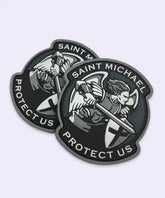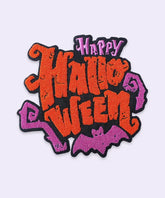World War 2 Uniform Patches:History, Meaning, Application and Identification
Table of Contents
- Introduction: World War 2 Uniform Patches
- World War 2 Uniform Patches Meanings ... !
- World War 2 Uniform Patches Identification
- How to tell if a WWII patch is real?
- What were WWII uniforms called?
- Is it illegal to wear military patches?
- World War 2 Uniform Patches vs World War 1
- World War 2 Uniform Patches
- World War 1 Patch
- How to make and apply World War 2 uniform patches . . .
- How to design these patches?
- How to apply these patches on Uniform
- Best Fabric for World War 2 Uniform Patches
- Are old military patches worth anything?
- Buying Tips, Vendor and Pricing Guide for World War 2 Uniform patches for the Army
- World War 2 Uniform Patches Value
- Word War 2 Patches Pricing Calculator -Rush Patch
- World War 2 Uniform Patches for Sale Near Me
- Conclusion
- FAQ’s
- Q: What were WWII uniforms called?
- Q: How to tell if a WWII patch is real?
- Q: Is it illegal to wear military patches?
- Q: Are old military patches worth anything?
- Q: Best fabric for reproducing WW2 uniform patches?
- Q: How to make and apply world war 2 uniform patches?
Introduction: World War 2 Uniform Patches

When you are talking about World War 2 uniform patches, you are not just talking about a piece of cloth but a piece of history, a piece of a unit, theatre, and service. These patches are stories of the frontline of the 1940s, which are now collected. This article discusses history, meaning, application and tips on how to use and purchase World War 2 uniform patches.
World War 2 Uniform Patches Meanings ... !
World War 2 uniform patches were stitched emblems that were put on by military members to signify their battalion, grade, function, or service section. Every patch had different symbols, colors, and designs that reflected divisions, corps, or special units like airborne, armored, or medical forces. These patches were usually sewn on the sleeves or shoulders of the uniforms and were not only helpful but also symbolic in that they served to identify the soldiers in the field, besides creating a sense of pride and camaraderie amongst their units.
The WWII patches have become helpful to collectors and historians today as they capture the historical significance, the craftsmanship, and the tales they offer of the soldiers and campaigns of the time.
World War 2 Uniform Patches Identification

How to tell if a WWII patch is real?
To identify patches of uniforms of World War II, it is possible to observe some of the main peculiarities: shape, color, symbol, and style of stitching. The different branches and divisions in the military had distinct designs; the 101st Airborne Division patch used by the U.S. Army displayed the head of the eagle, whereas the 1st Infantry Division had a big red 1. The original WWII patches were usually stitched on cotton twill and can display signs of wear, including very slight fading or ragged edges.
The type of thread used and the backing material may also prove differentiation between originals and reproductions. Wartime patches can be of an unexamined and rough back, whereas more modern reproductions are of plastic-coated backing. There are some great tools, such as reference guides, military insignia books, and reputable collector websites that are used to match the patches to a particular unit, division, or campaign and prove authenticity.
What were WWII uniforms called?

The uniforms of World War II were typically known by their official designations as the service uniforms in various countries and among the multiple branches, but with the U.S. military, the most commonly used uniforms were the M-1941 and M-1943 field uniforms of the Army. Early designs included the M-1941 Parsons jacket, which was fashioned out of lightweight cotton, and a subsequent design, the M-1943 uniform, included more valuable features, including better pockets, better Fabric, and was weather-resistant. Each unit developed special versions, such as the M-42 jump uniform of a paratrooper or wool dress uniforms to wear in the office.
These uniforms were to be used on the battlefield and also be able to recognize the person, and they were easy to wear and usable, as well as to withstand the battlefield. Other countries also had their own model uniforms, the British battledress and the German field-grey tunic, each of which showed different military traditions and military exigencies.
Is it illegal to wear military patches?
The use of military patches is not considered illegal, provided that they are not used in a manner that misleads and indicates a military service or military rank. A great deal of the surplus army clothing or patches is worn as a fashion or even a historical reenactment, and is worn or collected without legal concern. Nevertheless, legislation, including the Stolen Valor Act of the United States, criminalizes the wearing or display of military insignia, medals, and decorations to deceive others into thinking you have earned them, or are a veteran of the military when you are not.
Wearing official unit or rank patches is never a good idea in public because they might confuse people and may end up showing disrespect to the veteran or active-duty military personnel.
World War 2 Uniform Patches vs World War 1

World War 2 Uniform Patches
World War 2 uniform patches, on the other hand, were much more advanced and colorful. The development of embroidery and mass production enabled complex designs that not only denoted division, but also specialized branches such as airborne, armored, or medical. These patches were made in their original form, embroidered cotton twill, and were very strong and given out to soldiers in the U.S. and Allied troops.
Also, the WWII patches were more symbolic and morale as they displayed unit heritage, courage, and mission identity. They are still very collectible in the contemporary world because of their craftsmanship and the sheer amount of unique designs that were created in the course of the war.
World War 1 Patch

The patches on the uniforms of World War I were not of a very high standard or standardized as in the subsequent models. Patches were initially used in WWI to identify units on the battlefield using formation signs or divisional signs, as they were commonly referred to. Most of them were typically hand-crafted or locally created, their simple shapes and colors signifying divisions or corps, not necessarily regiments.
Wool or felt was used, and designs were minimized because of the minimal manufacturing technology. These primitive patches were mainly utilitarian, to form groups in vast armies, and also to instill a sense of unity in their units.
How to make and apply World War 2 uniform patches . . .
How to design these patches?
Crafts and historical considerations are applied in making and using the plates of the World War II-style uniforms. In order to create them, it is best to begin with real fabrics like cotton twill, felt, or wool, which were in use in WWII. The design must recreate historic patterns of insignia- they are available in references to military history, or in the archives. It is possible to design it by using embroidery machines or by hand-sewing, paying attention to colors and thread styles that are historically accurate.
How to apply these patches on Uniform
The World War 2 patches were mainly sewn, so to sew the patch, place it on a part of the uniform where it needs to be placed, that is, in most cases, a patch is placed on the shoulder, sleeve, or chest, depending on the unit and the branch. The patches were usually hand-sewn onto uniforms with a high-quality cotton thread, but in the later stages of WWII, machine sewing was employed in order to be more efficient.
Ensure that it is oriented perfectly to the military placement requirements. In case of reproduction or reenactment uniforms, patches may also be easily added with Velcro or heat-activated adhesive, though sewing is the most original and durable.
Best Fabric for World War 2 Uniform Patches

World War II uniform patches are usually made with cotton twill, wool, or felt, as these are the most popular materials during the war. Embroidery designs were done on cotton twill, which was a strong foundation, giving the embroidery endurance and ability to withstand use in a military environment. Wool and felt were also in trend, and most of the patches made by the early or the British were made of such Fabric since it could be easily cut and sewn into simple designs. Cotton thread-painted embroideries over these fabrics were added to create many WWII patches that had a texture and a raised look. To make a historically accurate reproduction or restoration, it would be best to use similar authentic materials, such as olive drab cotton twill or khaki wool, to replicate the appearance and the feel of the original insignia used in WWII.
Are old military patches worth anything?
Old military patches are indeed helpful, particularly the ones that belonged to significant events such as World War II, Korea, or Vietnam. Their value is based on the rarity, condition, authenticity, and historical value. Ordinary unit patches can only fetch a few dollars, and rare and specialized patches, such as airborne, ranger, and theater-made patches, can bring in hundreds or even thousands of dollars to the collector. Patches accompanied by documented provenance, e.g., worn by a particular soldier, or tied to some well-known battle or division, usually fetch a premium. The military memorabilia collector market is also very robust, and original vintage patches are not only admired in terms of design but also in terms of their history and service.
Buying Tips, Vendor and Pricing Guide for World War 2 Uniform patches for the Army
World War 2 Uniform Patches Value

The rarity, condition, authenticity, and historical value influence the prices of the World War II uniform patches. Popular patches, such as the U.S. 1st Infantry or 82 nd Airborne, usually fetch relatively small sums of money, usually between 10 and 30 dollars, particularly when they are well kept. Nevertheless, patches of elite, temporary, or special units, including airborne pathfinders, OSS (Office of Strategic Services), or some theater-created patterns may sell for hundreds of dollars or higher. Authentic patches of WWII are worth more than a copy, and provenance, such as records that the patch is associated with a particular soldier or battle, can add a lot of value.
The historical and market value of a patch will be adequately evaluated by consulting the reference catalogs, auction lists, or even military memorabilia experts, collectors, or military dealers.
Word War 2 Patches Pricing Calculator -Rush Patch
One can utitlize the Rush Patch World War 2 Patch Pricing Calculator or Patch Pricing Calculator, then you can calculate the pricing and place an order of patches (a WWII-style uniform patch or any other specialized patch).
However, you will need to consider size, the complexity of the design, the type of material, the number of patches to be ordered, and the price of the product per patch, which will depend on these variables. So, just input data Rush Patch offers customization options so you are able to make it with your choice. Website: rushpatch.com/
World War 2 Uniform Patches for Sale Near Me

You can find these patches online from sites like Amazon or Rush Patch. If you want to use them as collectables, then make sure to buy the authentic ones. If you wish to purchase customized or replicas, you can buy them from many different places, both online and locally.
Conclusion
The history of the World War 2 uniform patches is traced from the identity on the battlefield to the artifacts of the collector. It doesn't matter whether you are determining the originality of a particular piece, whether it has value, or whether you are making a replica of a historic patch; detail is of the essence, including edge type and backing cloth. These patches can be significant objects of service and history with the appropriate knowledge.
FAQ’s
Q: What were WWII uniforms called?
Uniforms that were in use in the U.S. Army included the Model 1939 Service Coat, M-1943 Field Jacket, and khaki/olive drab service uniforms.
Q: How to tell if a WWII patch is real?
Check cut-edge border, cotton thread bobbin, correct backing, documented unit design, provenance.
Q: Is it illegal to wear military patches?
It is not illegal for a person to wear it unless it is done to impersonates a service member or wears unauthorized awards.
Q: Are old military patches worth anything?
Yes, value depends on condition, rarity, unit, authenticity.
Q: Best fabric for reproducing WW2 uniform patches?
Wool or wool-cotton blend backing with cotton embroidery thread.
Q: How to make and apply world war 2 uniform patches?
Design accurately, replicate period fabric and edge, sew onto left shoulder or arm sleeve per regulation.
- Are old military patches worth anything?
- Best Fabric for world war 2 uniform patches
- How to make and application world war 2 uniform patches
- How to tell if a WWII patch is real?
- Is it illegal to wear military patches?
- What were WWII uniforms called?
- Word W 2 patches pricing calculator
- World War 2 Army patches and meanings
- world war 2 uniform patches
- World war 2 uniform patches army
- World war 2 uniform patches for sale
- World war 2 uniform patches identification
- World war 2 uniform patches meanings
- world war 2 uniform patches near me
- world war 2 uniform patches vs world war 1
- World war 2 uniform patches ww2
- WWII Army patches identification







